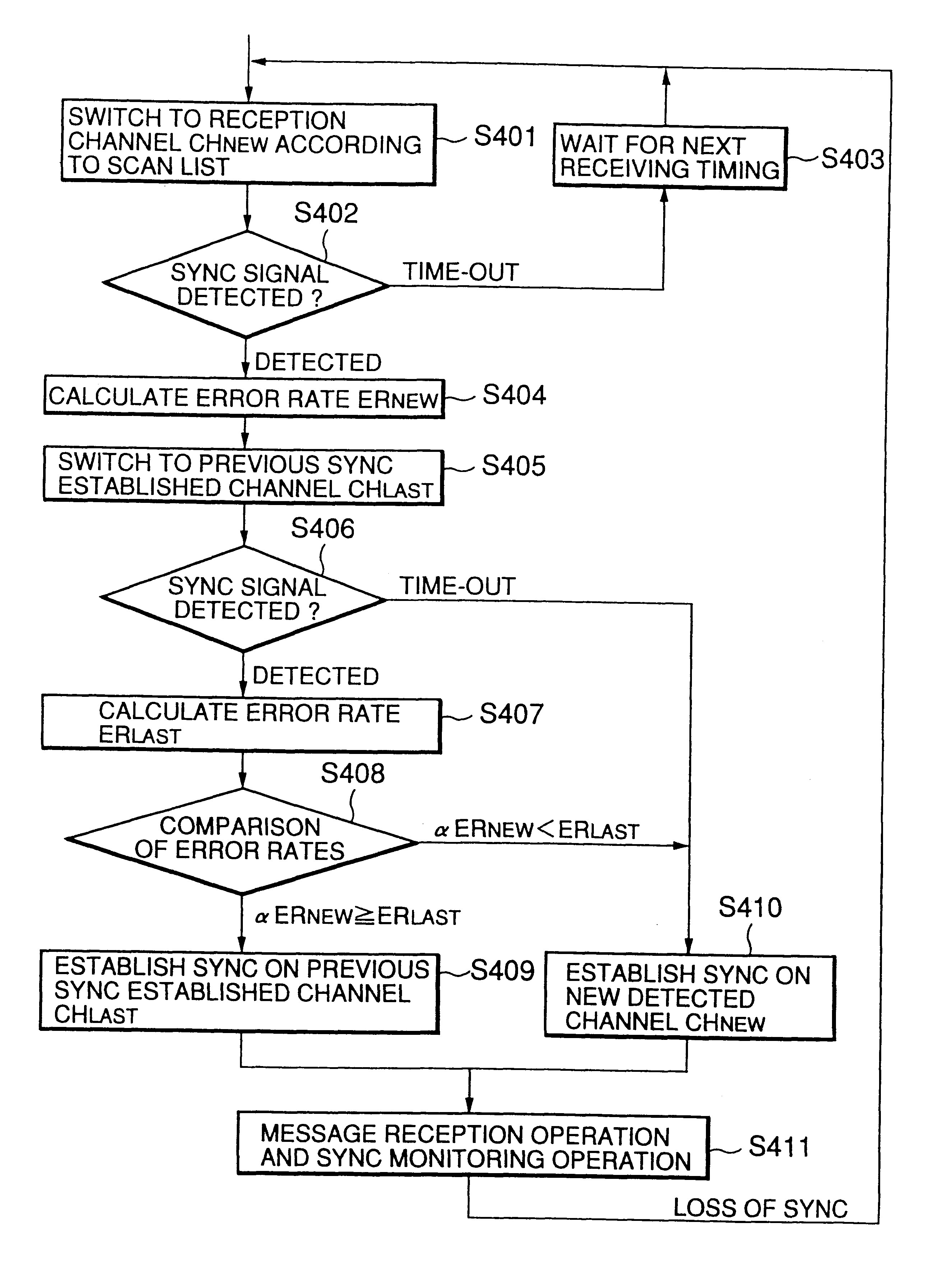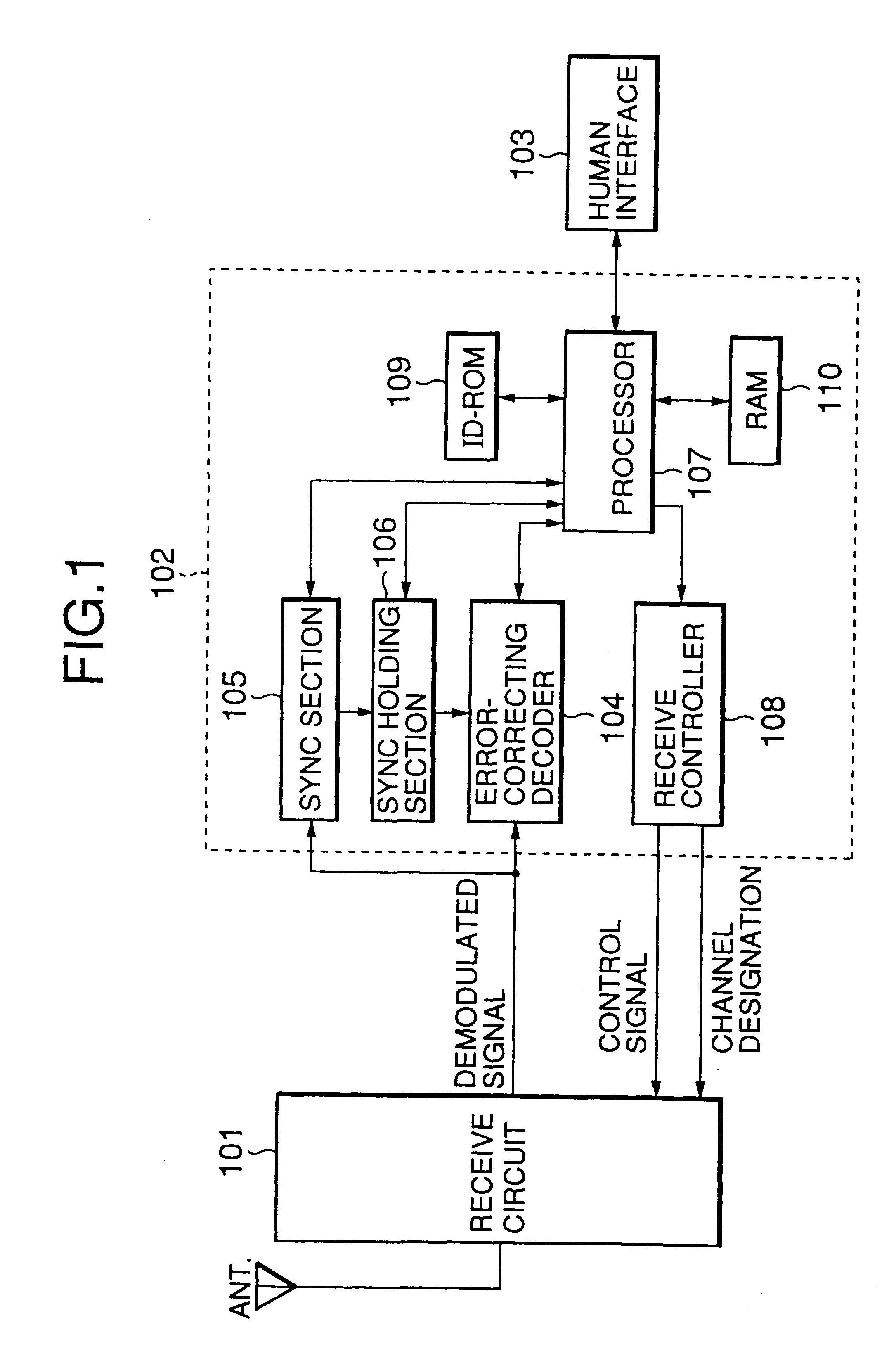Radio selective call receiver and channel selecting method thereof
a call receiver and selective technology, applied in the field of radio selective call receivers, can solve the problems of frequent changeover or handover from one area to another, failure to receive selective calling signals, and long average time length needed for achieving re-synchronization
- Summary
- Abstract
- Description
- Claims
- Application Information
AI Technical Summary
Benefits of technology
Problems solved by technology
Method used
Image
Examples
second embodiment
Referring to FIG. 4, there is shown a second embodiment of the automatic channel selecting method according to the present invention. The second embodiment is directed to making channel selection by taking the channel quality into consideration. Specifically, the error rate is calculated based on the error correcting operation by the error-correcting decoder 104 and the error rate is used as a basis for making channel selection. The second embodiment will hereinafter be described in detail.
When loss of synchronism is detected by the synchronization section 105 due to the movement of the user to outside the radio zone or to the temporary decrease in the reception intensity, the processor 107 stores therein the latest sync established channel CH.sub.LAST with which the receiver was synchronized. Thereafter, in order to search for an available channel with which the receiver is to be synchronized, the processor 107 performs the scanning of the channels in accordance with the predetermi...
third embodiment
Referring to FIG. 5, there is shown a radio selective call receiver employing a channel selection method according to the third embodiment of the present invention. In this diagram, circuit blocks similar to those previously described with reference to FIG. 1 are denoted by the same reference numerals and the explanations thereof will be omitted.
The receive circuit 101 outputs a received electric field level RSS corresponding to the demodulated signal to the control section 102. The received electric field level RSS is converted to a digital signal by an analog / digital converter 501 and the digital electric field level RSS is used in the processor 107 as a basis for making channel selection, which will be described hereinafter.
Referring to FIG. 6, there is shown the third embodiment of the automatic channel selecting method according to the present invention. The third embodiment is directed to making channel selection by taking the channel quality into consideration.
When loss of sy...
PUM
 Login to View More
Login to View More Abstract
Description
Claims
Application Information
 Login to View More
Login to View More - R&D
- Intellectual Property
- Life Sciences
- Materials
- Tech Scout
- Unparalleled Data Quality
- Higher Quality Content
- 60% Fewer Hallucinations
Browse by: Latest US Patents, China's latest patents, Technical Efficacy Thesaurus, Application Domain, Technology Topic, Popular Technical Reports.
© 2025 PatSnap. All rights reserved.Legal|Privacy policy|Modern Slavery Act Transparency Statement|Sitemap|About US| Contact US: help@patsnap.com



